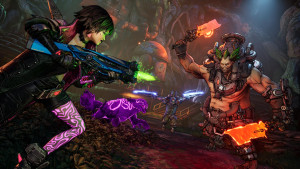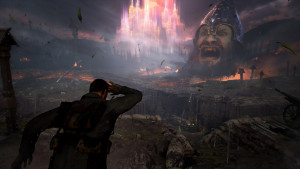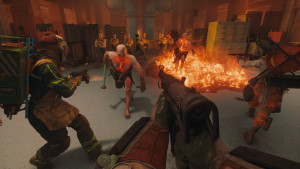Last chance for early bird pricing! Subscribe by June 25th to receive the debut issue
Same World, Different Game

The original incarnation of Final Fantasy XIV was a mess. It wasn’t fun, got poor reviews, and drummed up a lot of bad buzz from disappointed fans. That’s all relevant information, but you probably don’t need to be told why you didn’t play Final Fantasy XIV three years ago. However, you should know why it’s worth giving a second chance.
After some major staff changes and redesigns, Final Fantasy XIV has reemerged as a fantastic and entertaining MMO. While the contrast to its previous failure makes the improvement more noticeable, the transformation isn’t just impressive because of how far the game has come. Taken solely on its own merits, Final Fantasy XIV: A Realm Reborn is the best Final Fantasy of this hardware generation.
The biggest single factor in my enjoyment of Realm Reborn is the pacing. Everything is masterfully distributed, from the flow of important quests to the frequency of rewards, ensuring that players always have something fun and interesting to do. Specialized class quests open up every five levels, and other aspirational perks (like earning advanced classes or getting your own chocobo mount) give you a reason to crank out just one more level. To gain experience, you don’t just stand in one zone and grind monsters; the quest givers are plentiful, and their tasks gradually introduce you to the game and its mechanics. Those quests are usually basic “deliver this message” or “kill these monsters,” but once you know the ropes, you branch out into more interesting territory. Each class has a hunting log that rewards you nicely for killing specific beasts, and Guildleves are repeatable quests that earn a hefty chunk of experience. Those are fun, but the real payoff comes from focusing on Fates – cooperative world events. Fates involve players working together to complete a goal within a time limit, like defeating a strong foe or a large number of weaker ones. Upon victory, you’re awarded money and experience based on the weight of your contribution.
No one of these things seems groundbreaking alone, but taken together they provide a steady stream of worthwhile content. If you get bored of one activity, you move on to another. This slows down considerably as you hit the level 30, so you don’t ride the wave all the way to the cap of 50 – but it lasts long enough to get you invested in the world and your character.
Leveling up is satisfying, but the real purpose is to feed into the cool job system fueling your abilities. You start by picking a single class (I went with the Thaumaturge, focused on offensive casting), but can switch to another one after level 10. The advantage to switching is that certain skills can carry over from one class to another; after switching to Conjurer (healer), I was able to learn the Cure and Protect spells and use them when I went back to being a Thaumaturge. The number of abilities you can carry over is limited, so you can’t have a single character who can use every class ability. However, you also don’t need to create new characters to try out different playstyles; you’re better off using a single character and benefitting from the extra skills (and an experience boost) that comes with experimenting with other disciplines. This system fully captures the fun of the job system found elsewhere in the series, like Final Fantasy V, allowing for a great deal of customization.
Combat works well, veering away from the need to auto-attack while waiting for cooldown timers. Classes have a good selection of abilities to keep players involved in the action, but a lot of fights boil down to routine. Some enemies use special attacks that have a highlighted zone of effect, and moving out of the way adds a small element of mobility to the action, but most of the time you are just going through the motions. Of course, situations get more complicated when you’re tackling the dungeons and bosses.
Realm Reborn is generally solo friendly, but a handful of story missions require a party, which you can assemble yourself or use in-game matching. The only frustration I had on that front was the wait; as a damage-focused class, I easily waited 30 minutes or more for an open slot. In a group, each class fills one of three roles familiar to any MMO veteran: tank, healing, and damage. The interplay between these roles is predictable, but coordinating a strategy with your party members is still fun. This is especially true of boss battles; they demand the same kind of cooperation and precision that a hardcore MMO player would expect. The highlights are the battles against primals – creatures like Ifrit and Titan – that are visually stunning and tactically challenging. I was also impressed that during these tense encounters I was still able to control the action using a gamepad (with a keyboard to handle typing). Mouse-and-keyboard is still easier, but a non-broken gamepad interface is a step in the right direction for the genre.
I’ve sunk dozens of hours into Realm Reborn, and have been having a great time. I haven’t hit the level cap yet, but some players in the community have voiced disappointment at the sparse endgame offerings. After completing the main story, the flow of quests stops and players are instead left to grind for better equipment, level up other combat classes, or delve into crafting. I wasn’t impressed by the crafting system at all, so I can understand why some players are upset by the lack of diversity at the end of the line. Even so, progressing to that point is rewarding, and an array of iconic elements like Magitek Armor and Chocobos gives the journey an unmistakable Final Fantasy vibe.
[This article initially appeared in issue 248 of Game Informer.]









